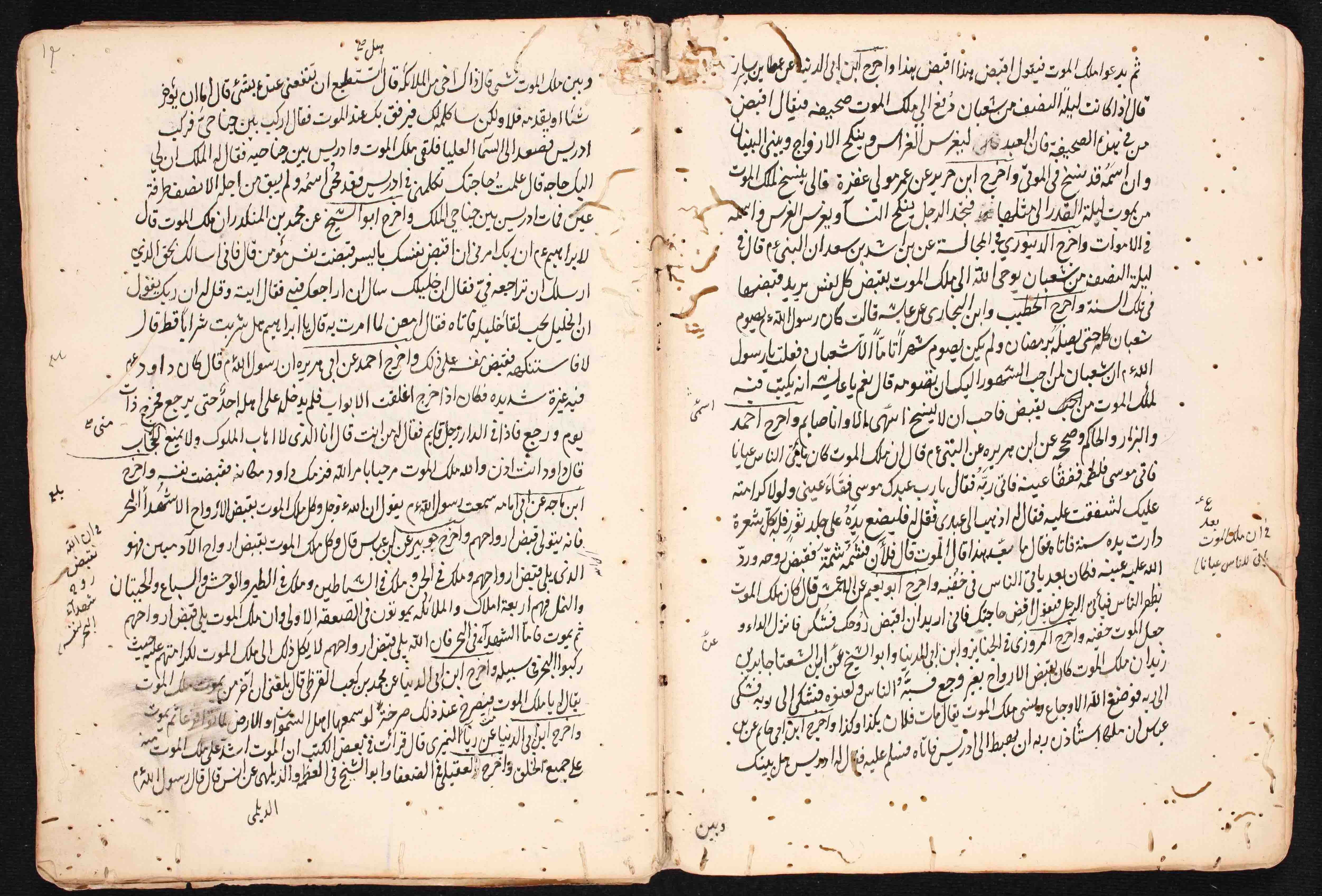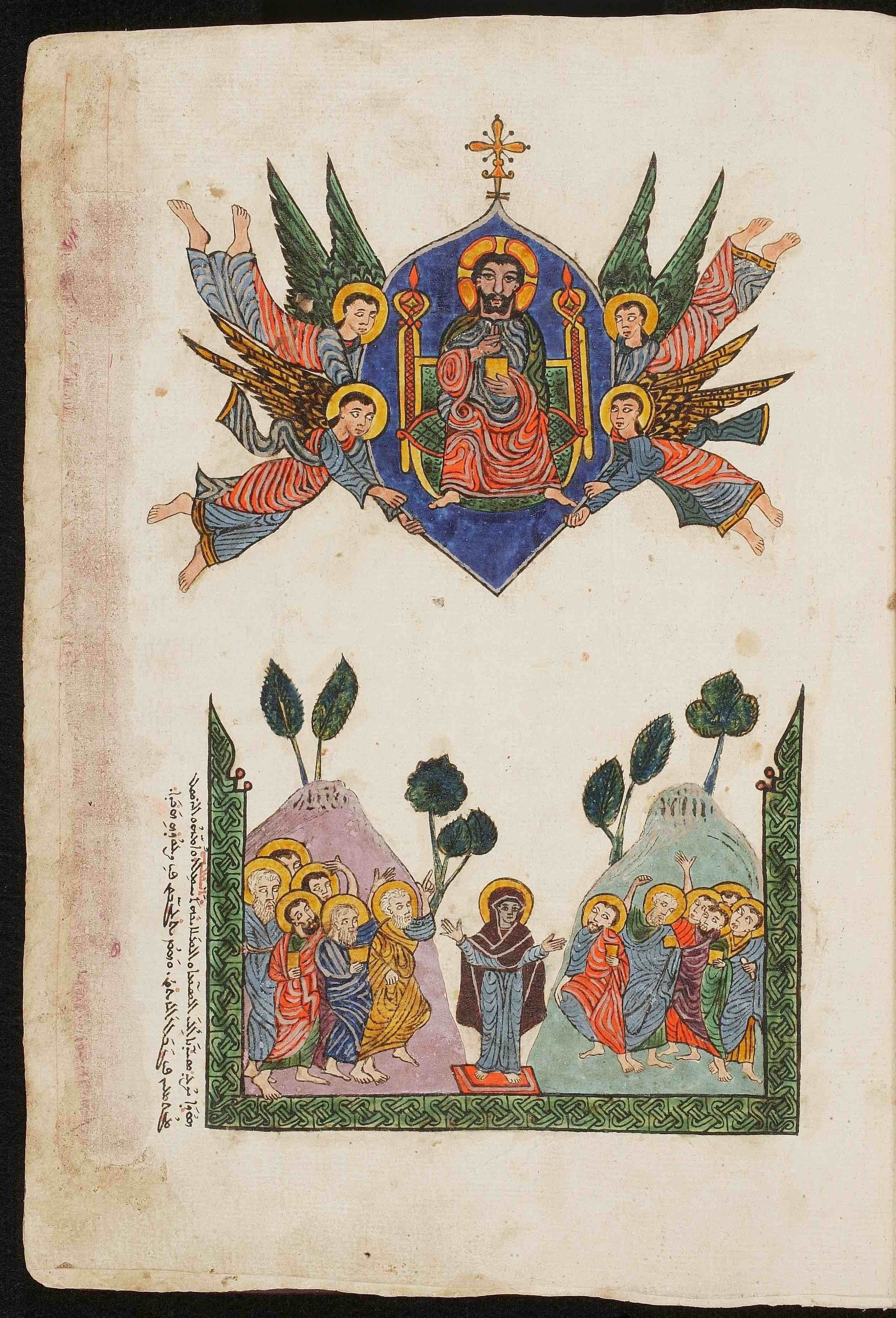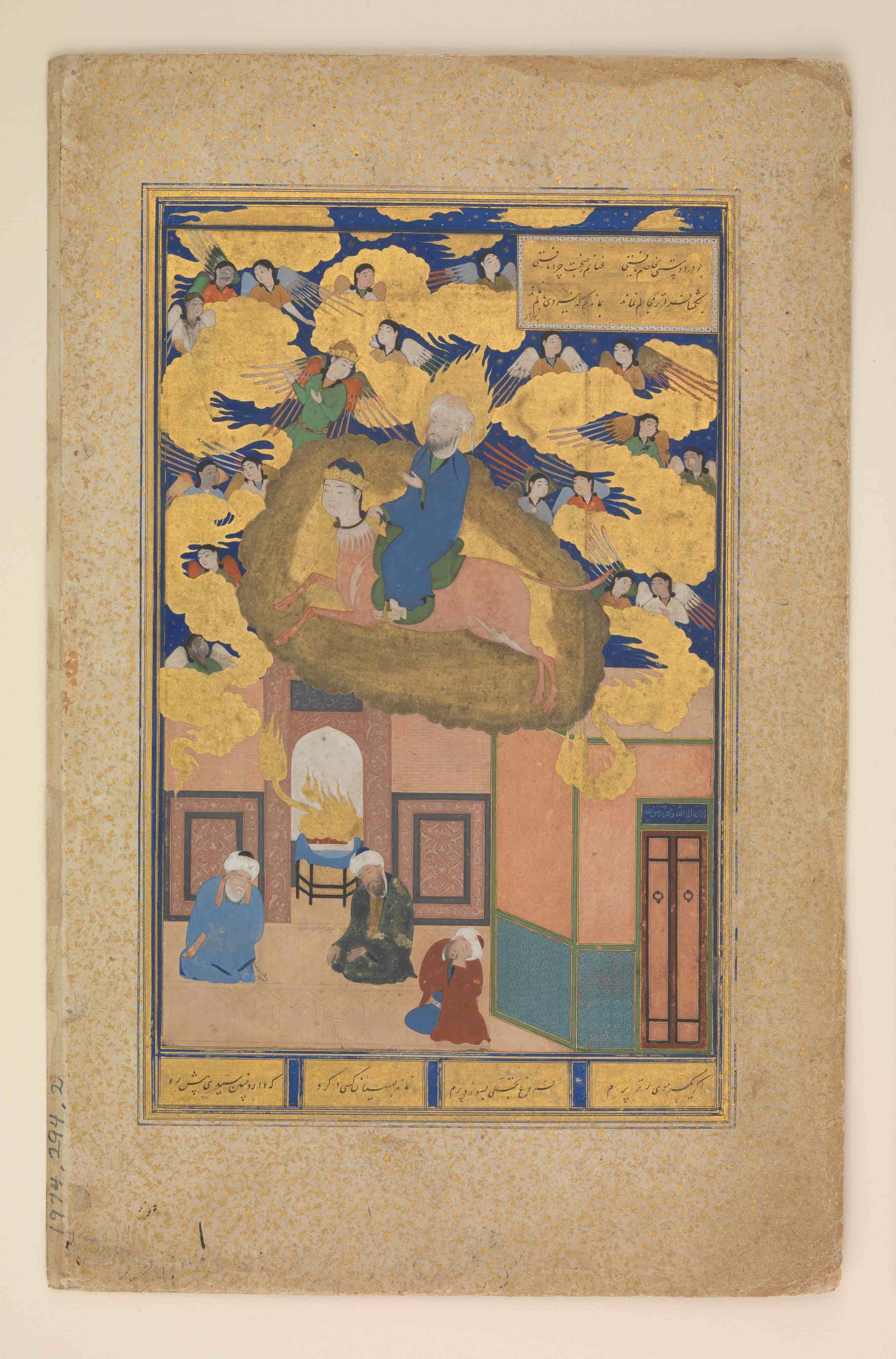Lifted On Wings
Lifted on Wings
This story is part of an ongoing series of editorials in which HMML curators and catalogers examine how specific themes appear across HMML’s digital collections. Sister Marie-Thérèse Elia looks at The Celestial in this story from the Eastern Christian collection.
Angels occupy an important place in monotheistic religions. They are mainly presented as celestial beings in the service of divinity, serving in two main categories: those who adore in the heavens and those who assume divine missions toward humankind.
Over the centuries, and in different religious circles, treatises have been drawn up detailing the names, forms, ranks, functions, and deeds of angels.
For example, their service is described in an Arabic treatise by Muḥammad Qunbūr al-Anṭākī, on the difference between angels and jinn, and in an Arabic treatise by Jalāl al-Dīn ʻAbd al-Raḥmān ibn Abī Bakr Suyūṭī (1445–1505), on the activities of angels. Angels’ superpowers were the reason for introducing their names, along with those of jinn, in talismans and amulets, as seen in the magical writing of SAV ABS 07368, a fragment in HMML’s online collection of digitized manuscripts.

One mission of angels—carrying a divine message on earth—supposes a kind of descending movement carried out by the angel from heaven to accomplish a task. This descending movement also corresponds to an ascending movement by which the angel transports to heaven prayers, wishes, reports, and—of particular interest in this story—people.
The passage to heaven means the death of the human being. Many traditions depict death as being the work of the “angel of death,” an agent who comes to seize the human soul and transport it to the place of the dead. Sometimes the human is not subjected to the action of the angel of death; in the parable of the rich man and Lazarus, the poor man “died and was carried away by the angels to be with Abraham,” unlike the rich man who “also died and was buried” (Luke 16:22 NRSV).
In other circumstances, the person seems to be transported from earth of his own accord in a rather festive atmosphere. The prophet Elijah is said to be taken up in a hurricane to heaven, in a chariot of fire, drawn by horses of fire. In both Jewish and Christian traditions, the text describing this incident does not give any trace of angels. However, a miniature in EMDA 00408 depicts angels surrounding Elijah’s flaming chariot. Moreover, the main hymn of the feast of Saint Elijah in the Byzantine rite begins by calling him: “O Angel incarnate!” (BALA 00021, fol. 85r).

In the Christian tradition, angels are also depicted in the ascension of Jesus, without a mention of their presence in the text. The Gospels end by simply saying that Jesus was taken up into heaven, while the Acts of the Apostles relates that “he was lifted up, and a cloud took him out of their sight” (Acts 1:9 NRSV).
However, in representations of this scene—for example, in an Arabic and Arabic Garshuni liturgical Gospel book (CFMM 01150)—the angels surround Christ ascending in glory. Angels are similarly depicted in a Slavonic manuscript (STEF00039), and in an Armenian manuscript (AODA 00076, fol. 5v) four angels surround an enthroned Christ. In each of these cases, the angels introduce movement.


In several Christian apocalypses (see the Apocalypse of Paul in SOAA 00044 M and the Apocalypse of Gregory in SOAA 00226 Z), angels lead humans to visit the various stages of Heaven. The angel appears to the viewer, announces the divine intention to reveal the different celestial (and sometimes infernal) places. The viewer is then carried in the air and accompanied by the angel along the journey.
A similar ascent exists in Islam in the celestial night journey of Muḥammad, al-Isrā’ w-al-Miʾrāj (Isra and Mi'raj).
According to the Qur’an and the Islamic tradition, Muḥammad was asleep in Mecca when the angel Gabriel woke him up and brought him a steed named Burāq, which Muḥammad then mounted and flew miraculously to Jerusalem (al-Isrā’). There, from a rock, he ascended to heaven (al-Miʾrāj), carried by Gabriel. With the Archangel, he visited the different levels of heaven and met people and prophets until he arrived to Sidrat al-Muntahà in the seventh heaven. An illustrated folio from the Bustan of Saʾdī Shīrāzī (The Orchard) depicts Muḥammad ascending to heaven, while still being carried by the winged horse Burāq, accompanied by Gabriel and surrounded by angels.

“Lifting up” continues to be a topic related to angels, as we see in a prayer in the book of rituals of the Melchite Catholic Church, used to bless a very modern lift—an elevator:
“O Lord our God, you fashioned man in your image and likeness, and gave him authority over the forces of nature to use them to glorify you; You made the angels, spirits that move at the speed of lightning to serve you and carry out your orders; You, Lord, bless by your holy right hand this lift provided for the service of your children, so that it facilitates their movement like your holy angels. Keep its users from all bodily danger and may by its elevation from the earth, their spirits be lifted up to you, so that they may glorify you with the heavenly forces, you who are glorified for ever and ever. Amen.”
(Translated from Arabic, Euchologion of the Catholic Melchite Church, Lebanon, 1968; emphasis added.)




